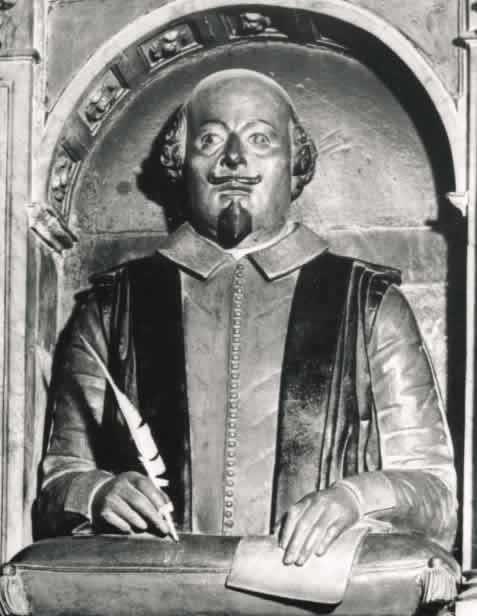2 October 1817: Shakespeare’s Birthplace & Importance
Stratford-On-Avon: Shakespeare’s Birthplace (A) and Holy Trinity Church (B)
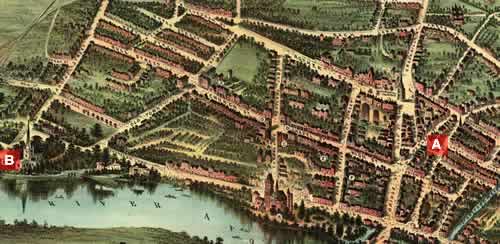
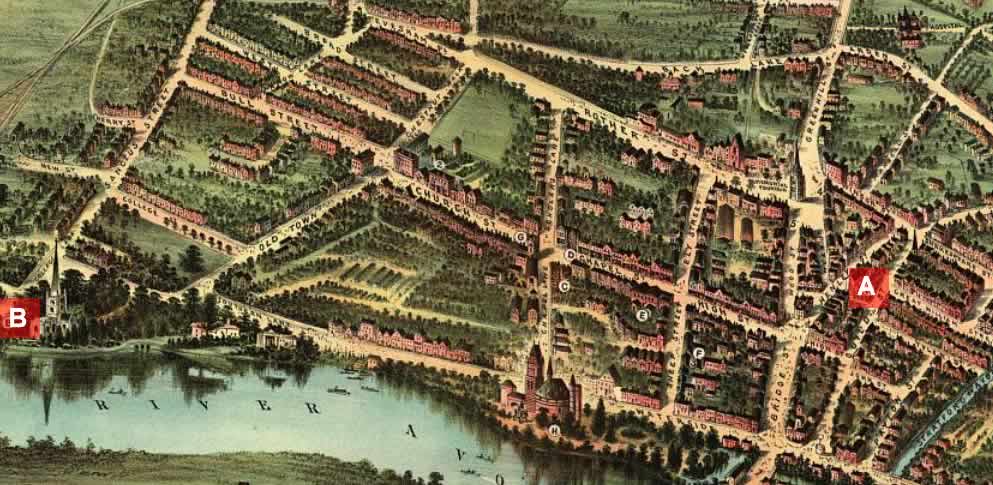
In early October 1817, Keats (aged 21) travels about thirty-five miles or so to Stratford from Oxford with his friend, Benjamin Bailey, with whom he has been staying since 3 September. Bailey is studying for his holy orders while at Oxford University. They stay two days in Stratford; Keats will be back in London by 5 October. The month at Oxford—staying with Bailey in his rooms at Magdalen Hall—is a short but relatively settled period.
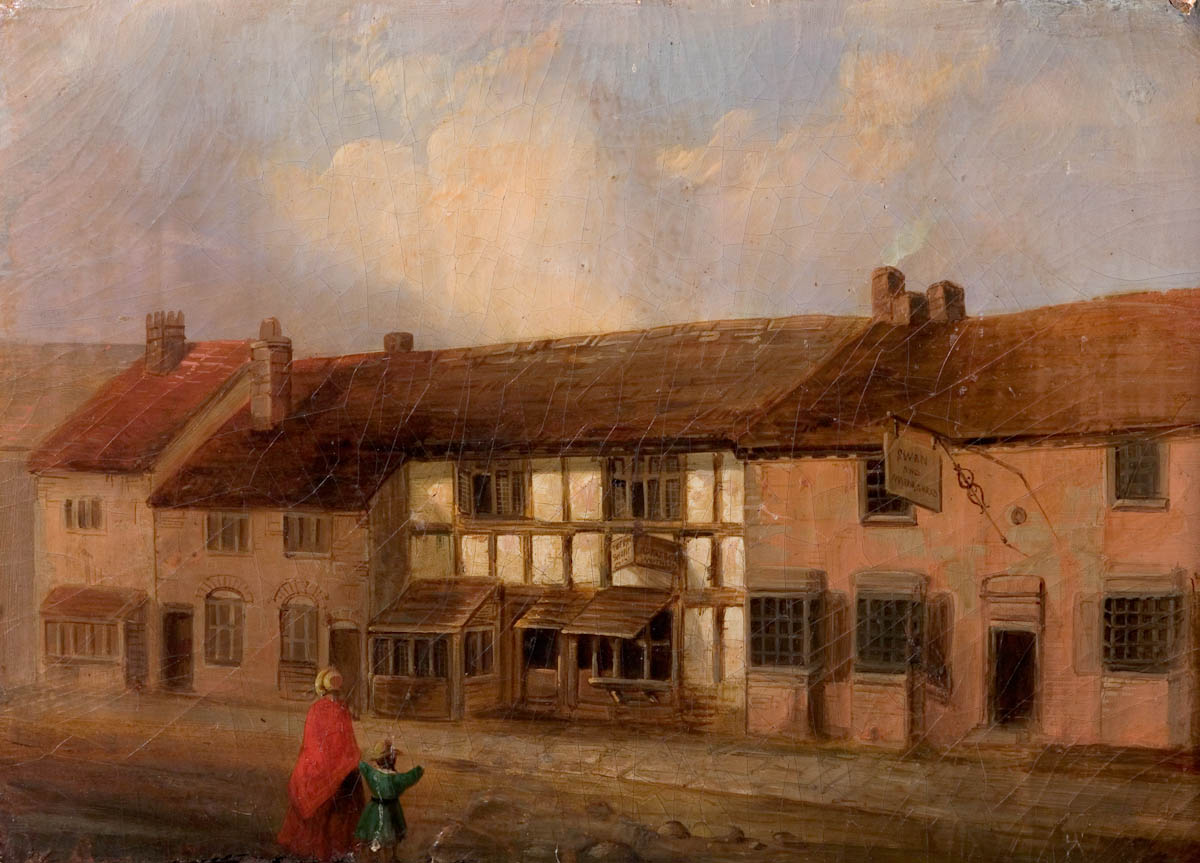

In Stratford, Keats and Bailey see a statue of
Shakespeare, and they visit the room where
Shakespeare is apparently born. They sign the visitor book of the house, and where
Keats is
supposed to enter his Place of Abode
in the guest book, he writes
everywhere
—even here, fooling around, Keats, is ever the negatively-capable chameleon
poet. They also write their names on the wall along with the thousands who have already
done
so in homage to the Bard, and then they go to Holy Trinity Church, where Shakespeare
was
baptized and buried; and, once more, in signing the church visitor book, beside his
name he
writes the Latin equivalent of everywhere
: ubique. Keats is back at Hampstead
by 5 October to meet up with his younger brothers, Tom and George, who have been holidaying in France.
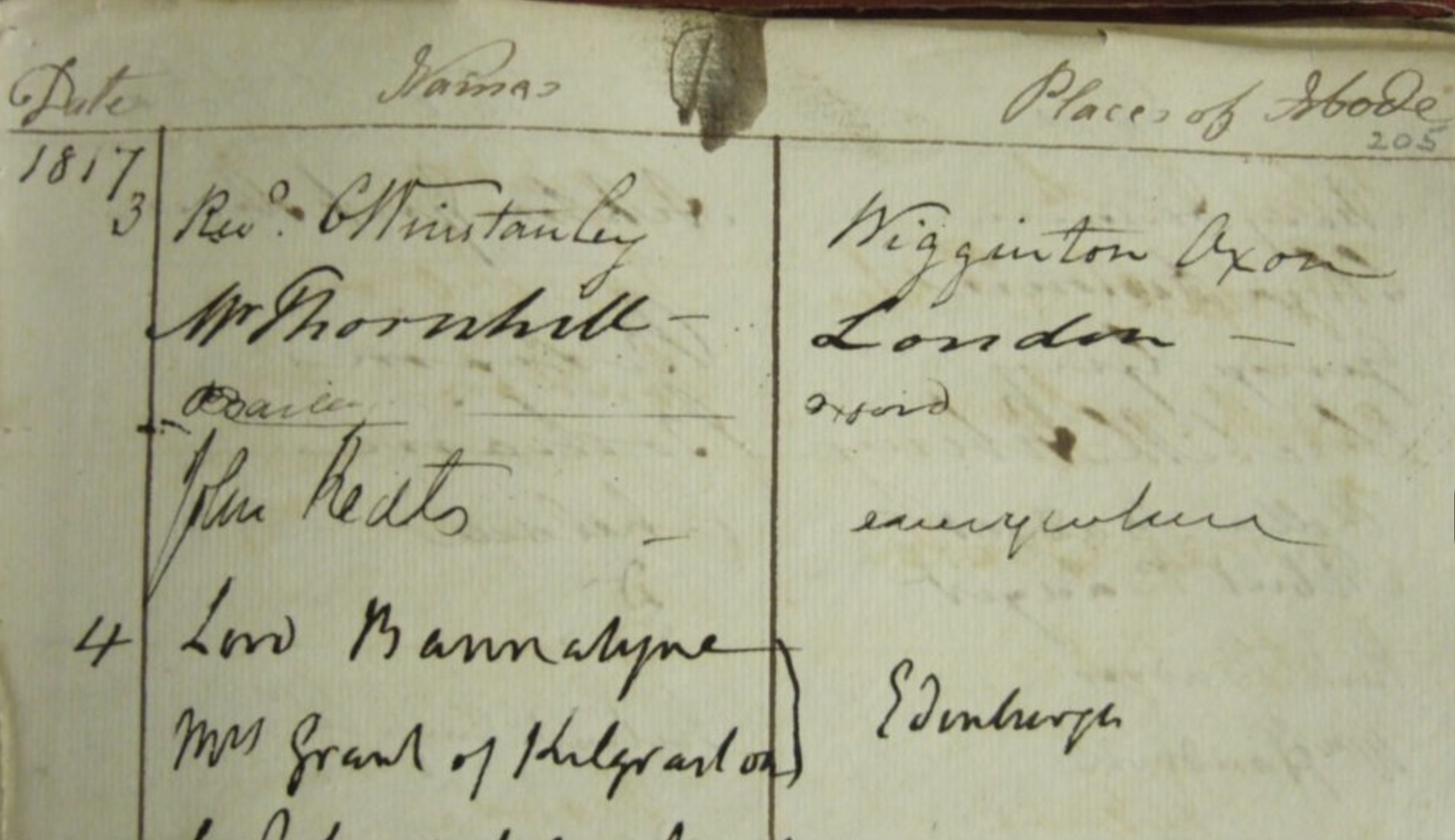

everywhere.The full book is at the Shakespeare Birthplace Trust archives (DR185/1). Click to enlarge.
While staying with Bailey, Keats and scholarly Bailey work steadily at their own projects (Keats on Endymion, mainly Book III); but, while enjoying Oxford’s ambiance, they take plenty of time to discuss literature, philosophy, and religion, as well as to read poetry and criticism together. Keats will leave Oxford fortified and challenged by ideas about the imagination, theology, Wordsworth, Milton, Shakespeare, and Dante, as well as forging a deliberate and important understanding of William Hazlitt’s philosophy and criticism. In subsequent letters to Bailey, we get a picture of the topics they must have discussed, as well as the complex depths of the discussion; some of Keats’s most important thoughts subsequently turn up in his few letters to Bailey (see, for example, Keats’s letters of 8 Oct, 22 Nov 1817, 13 March 1818). Perhaps most importantly, Bailey’s ideas about the function or meaning of faith—a faculty by which to perceive truth?—almost certainly raises Keats’s thoughts, since, for him, truth is more aligned with imaginative capabilities. [For an overview of Keats’s ideas about religion, see 18 December 1795.]
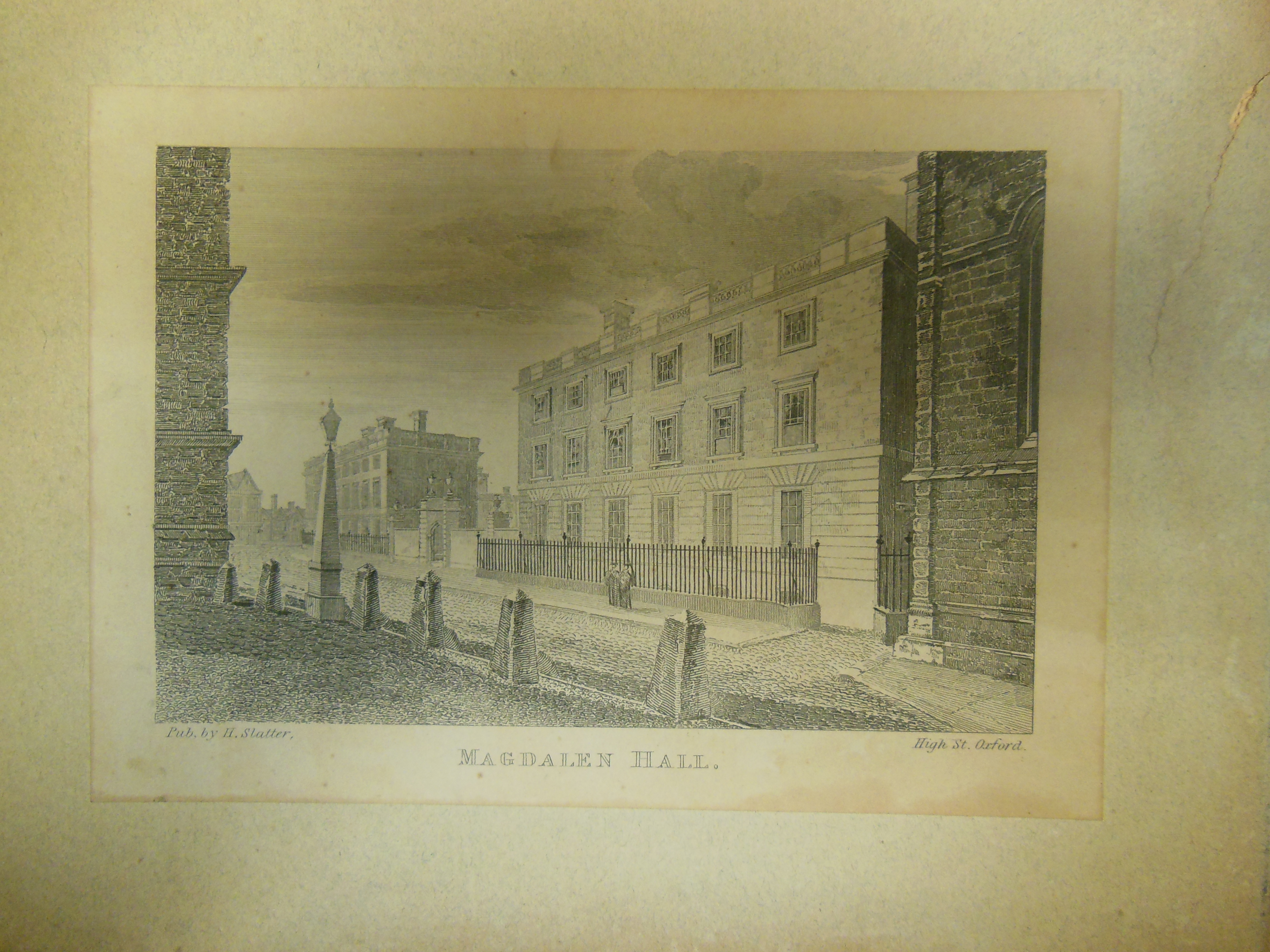

Shakespeare is easily Keats’s most
venerated literary figure—his literary presider, to use Keats’s own term of privilege.
Almost
all of Shakespeare’s works are mentioned,
alluded to, or quoted directly in Keats’s letters—Shakespeare seems to float to the
surface of
Keats’s thoughts in every possible situation, expression, or play of words. For example,
at
the end of his life, when his health is weak and he cannot muster the strength to
write
poetry, Keats is at a loss on how to express his situation to his love, Fanny Brawne; he can only write, Shakespeare always sums up
matters in the most sovereign matter
(letters, August 1820). Three years earlier, when
his writing career is mainly ahead of him, he concedes the idea (derived from Hazlitt) that Shakespeare may be enough for
us
(letters, 11 May 1817). Keats’s very good friend, Benjamin Robert Haydon, will, in his autobiography, recall that
the most he ever got out of Shakespeare was in his conversations with Keats.
Keats believes something that few would dare to say. In the context of moving beyond
Endymion’s inadequacies, he writes, I have great reason to be
content, for thank God I can read, and perhaps understand Shakespeare to his depths
(letters, 27 Feb 1818).
Purposeful evaluation of Shakespeare’s
literary qualities is central to Keats’s progress. This is especially clear given
that,
significantly, Keats’s poetics generally drive and are in-advance of his poetry’s
development.
Two of Keats’s most important critical insights relative to his progress come in the
context
of Shakespeare. First, in attempting to explain greatness in literary achievement,
Keats
formulates his idea of Negative Capability when, with subtle
intensity, Beauty & Truth
collapse as indistinguishable and eclipse all other
considerations, including doubt, mystery, fact, reason, or any disagreeables
; Keats
notes that King Lear exemplifies such qualities. About 200
words later, Keats writes that Shakespeare possessed [these qualities of literary
achievement] so enormously
(letters, 21/27 Dec 1817).
Second, ten months later, Keats describes the poetical Character
he suffers to
achieve. He distinguishes his own type from the wordsworthian or egotistical sublime; which
is thing per se and stands alone.
Keats’s poetical sort is otherwise: it is not
itself—it has no self—it is everything and nothing—It has no character—it enjoys light
and
shade; it lives in gusto, be it foul or fair, high or low, rich or poor, mean or elevated—It
has as much delight in an Iago as an Imogen. What shocks the virtuous philosopher
delights
the camelion Poet [. . .] A Poet is the unpoetical of any thing is existence
(27 Oct
1918). Not only is some of the key wording—a thing per se and stands alone
—a direct
reference to Troilus and Cressida (1.2.15), but also the
contrasting characters—treacherous male Iago vs Othello and tender female Imogen vs
Cymbeline—come from the range of personality and voice that Shakespeare somehow perfectly ventriloquizes.
Suffice it to say, Shakespeare inhabits a
fair amount of Keats’s middle and later poetry, beyond the obvious inhabitation of
Shakespeare
manifest in his letters—yes, inhabitation.
It is not just the case that we encounter
many and varied allusions to Shakespeare’s work, thus making Keats merely another
reader or
user of Shakespeare’s phrasing. Keats’s relationship with Shakespeare is different.
His
deliberate, detailed, deep, and ingenious study of Shakespeare urges him to a particular
poetic position as well as to a personal realization, that he lives life and then
represents
life in a way like Shakespeare. The totality of this somewhat bold conclusion takes
us to something simple to say, yet complex to fully apply: Over a fairly short period,
Keats
evolves a consciousness of himself as experiencing and responding to the world—of
feeling and
thought, of sensation and reflection, of mutability and permanence, of suffering and
joy—in,
as suggested, a manner like Shakespeare. When Keats is just about to write his greatest
poetry, and in the context of observing how few people actually see into the complexities
of
life’s mysteries, Keats comes up with a remarkable insight, that Shakespeare led a life of
Allegory
—Shakespeare’s works are the comments on it
(letters, 19 Feb 1819). This,
too, is how Keats’s views his own life relative to his work (his letters make this
clear), and
what he wants to accomplish in his poetry.
For Keats, the initial step is to embrace and employ a faculty in fact quite natural
to him:
Shakespeare’s camelion,
empathetic
imagination (letters, 27 Oct 1818). Keats comes to realize that, for him, the drama
in poetry
is not for opinion, for bullying, for self-indulgence, for showy artistry, or for
simple,
random amusement; it is not for final reasoning or clear, absolute reckoning. Poetry
should,
rather, invite the reader into the moment or scene with imaginative felicity and with
unselfconscious, unobtrusive language, to a point where the subject, rendered with
controlled
intensity, is all, even in (or maybe especially in) its inconstancy or uncertainty,
to where
some essence of humanity can be represented. This he begins to achieve in his poetry
in the
early months of 1819. Keats will compose enduring, deep poetry in lines that no longer
linger
in verdurous bowers or that droop pleasingly over delicate, dewy buds. Which takes
us to what
Keats is writing in October 1817.
During his month at Oxford, Keats works steadily to complete the third book of Endymion, though by the end he is dissatisfied with it. He writes
to his friend, the historical painter Benjamin Robert
Haydon, My Ideas with respect to it I assure you are very low [. . .] I am tired
of it
(28 Sept 1817). He goes on to quote from a letter written to his brother, George, earlier, in the spring, where he worries over
poetical fame
; he sees Endymion as a trial of my
Powers of Imagination
and a long poem a test of Invention which I take to be the
Polar Star of Poetry [ . . .].
In contrast to the relatively structured month-long peace at Oxford and the profitable
and
ranging discussions he had with the scholarly, unassuming, and somewhat conservative
Bailey, back in Hampstead Keats almost immediately
writes to Bailey: he is disgusted
with literary Men
and their petty jealousies
(8 Oct 1817).
At this moment, Keats hopes he can maintain poetic independence, particularly from
Leigh Hunt, even if it is Hunt who, a year earlier,
more or less launches Keats’s poetic career. Keats hears that Hunt, behind his back,
may be
acting somewhat condescending toward Keats’s poetic work on Endymion, as if he assumes some ownership of Keats’s quality and direction. Writing
to Bailey, Keats fears that his Reputation
will be set as Hunt’s callow student (8 Oct 1817).
Keats’s fear in fact becomes too true: less than a year later, in the August 1818
issue of
Blackwood’s Edinburgh Magazine, Hunt is portrayed as Keats’s prototype,
with little Johnny
Keats
adopting Hunt’s loose, nerveless versification, and Cockney rhymes.
Endymion comes off
terribly: it is portrayed as calm, settled, imperturbable drivelling idiocy.
And just
weeks after the attack by Blackwood’s, the April edition of
Quarterly Review is finally released, and is just as
damning, calling Keats an imitator and copyist of Mr Hunt
—Hunt’s simple
neophyte.
Endymion is mocked
for its diction and versification, and for the way the convenience of a rhyme excitedly
determines direction. Keats, the review notes, wanders from one subject to another, from
the association not of ideas but of sounds, and the work is composed of hemistichs
which, it
is quite evident, have forced themselves upon the author by the mere force of the
catchwords
on which they turn.
Most of this is, unfortunately, correct. Endymion is overly and often arbitrarily poeticized, with too many moments forced and many others seemingly random—in many passages, direction does seem driven by sound (rhyme) rather than sense or story. Superfluous details and description awkwardly bump up against vague sweeps of sentiment. Thus aspects of Hunt’s influence are indeed present. Keats knows that he will have to go in other directions to achieve anything like the poetic independence and greatness he has been thinking about for over a year. In fact, it could be argued that in proofing and revising Endymion for publication, Keats faces its generally ineffectual character, thus motivating significant change in direction.
It can be conjectured that during his time with Bailey in Oxford, and given the larger, deeper topics they discussed, Endymion’s relatively insubstantial quality and purpose becomes increasingly apparent. This is a key realization in terms of Keats’s future poetic directions. The good will come after the bad and the ugly.
